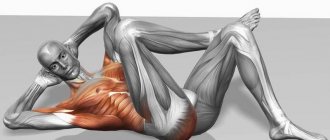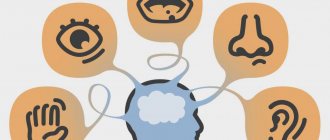The human senses do not know rest. You are constantly surrounded by various sounds, smells, and visual images. All this certainly responds against an emotional background, and also triggers response processes. But imagine that for a moment you found yourself in a complete void, where sunlight and background noise do not penetrate.
What will happen to the body under conditions of absolute sensory deprivation, when a person finds himself alone with himself? Is it good or bad?
In this article:
What is sensory deprivationPositive and negative effects of sensory deprivationHow to achieve sensory deprivation at home
What is sensory deprivation?
In official psychology, such a term means complete or partial, short-term or long-term restriction (deprivation) of stimulation of the senses. Sometimes the restriction can be voluntary and conscious. The spiritual teachings of antiquity (Egypt, Maya, Tibet) included mandatory practices of solitude and long-term meditative self-absorption. The experience gained helped me to know myself, the laws of the universe, and develop the necessary personal qualities.
Information hunger
In the modern world, overflowing with information flows, such a concept still exists. An acute feeling of lack of information to make decisions about further actions arises in conditions of abundance, but chaos. All facts have equal weight and significance. As a result, the need for information saturation remains unsatisfied.
Tactile deprivation
Skin is the largest organ of our body. It is rich in sensitive receptors. Touch, mechanical irritation of the receptors of the surface layers of the skin (massage, spa treatments) in many cases have a beneficial effect on the general condition of the body and psyche. Lack of physical contact leads to disruptions in many areas of life.
BDSM results
One of the most common questions asked by BDSM lovers is: “Why? Is traditional sex really not enough? In fact, for some it is really not enough. Below are five factors that distinguish BDSM from other sexual practices.
Release of endorphins
Complex relationships of subordination and humiliation awaken new feelings in a person that he may not experience during normal life. A strong selection of endorphins (hormones of happiness) is possible for both the dominant (when he sees how the submissive enjoys himself) and the submissive (when he sees how the dominant enjoys power over him).
Orgasm
Submission, a sense of power (over someone or someone else), pain, accessories, exciting external images - all this gives a thrill. As a result, orgasms during BDSM sessions are very vivid; girls can even squirt (when they cum along with the release of ejaculatory fluid, like men). In addition, such an orgasm takes longer to achieve, which makes it more sensual.
Subdrop
Subdrop is a kind of “hangover” in the lower partner, which occurs after a long and tiring BDSM session. It is accompanied by weakness, physical discomfort and psychological depression. Often, subdrop occurs among submissives who are new to the topic, as well as among those who have low self-esteem or incompatibility with the dominant. In order for such a state not to appear, it is necessary to have a trusting and open relationship with the upper partner, lead a healthy lifestyle and not perform actions during the session that you really do not want to do.
Partner satisfaction
The main principle of BDSM relationships is that the submissive gets pleasure from what satisfies the dominant. This unusual principle really works, because some people genuinely like to be submissive (at least in sex). Relationships that go beyond thematic sexual contacts are possible between the two partners. People can truly love each other and want to please each other, and express this in BDSM sessions.
Expanding the boundaries of knowledge
BDSM is more than sex. This practice allows you to turn to the origins of human psychology and get to know yourself better. In addition, this is an opportunity to get enough not only physically, but also emotionally - through a dominant or submissive role. Such sessions will be a good way to get rid of stress and cope with everyday stress, and give vent to feelings.
Advantages and disadvantages
In modern society, retreats have become widespread - the practice of solitude, concentration on one’s inner world, and silence. Gaining such experience helps to re-evaluate and re-set existing priorities, structure and harmonize the internal space, and make the right decision.
Forced or forced deprivation (limitation) of the supply of sensory stimuli is fraught with the development of inappropriate behavior and delayed mental development. In severe cases, chronic and incurable diseases of a psychosomatic nature are diagnosed. The emergence of addictions to alcohol, gambling or computer games, or drugs is a person’s attempt to diversify his life and escape from deprivation.
Sensory deprivation capsule
It is convenient to study the phenomenon of deprivation and its impact on a person’s physical and mental health in a specially equipped space. This container is completely isolated from any external irritants and filled with warm salt water. The subject is immersed in it for several hours a day. With the help of sensors, neuroscientists gain access to the processes occurring in the mind of a person who is in sensory isolation.
The inventor of the camera, physician John Lilly, believed that in a confined space it is best to study all the stimuli necessary for the functioning of the brain and the development of the psyche. The results obtained allowed researchers to begin studying the brains of large mammals and even create a map of communicative signs for communication between dolphins and humans.
Prolonged (for an hour) stay in the capsule produces a pronounced therapeutic effect:
- transfers the brain to the most resourceful state of alpha and theta waves;
- has a deep and pronounced relaxation effect on the internal organs and tissues of the body;
- introduces a person’s consciousness into a non-judgmental state of “flow”, weakening the “iron grip” and reducing the desire to control the world around him;
- harmonizes and pacifies the internal space;
- increases awareness, enhances intuition, promotes the emergence of insights and creative ideas.
The float capsule (sensory deprivation chamber) was created in 1954 by American psychotherapist and neuroscientist John Lilly. The theoretical foundations for its creation were laid by research conducted during the Second World War. In the post-war years, when John Lilly worked at Pennsylvania State University, he wrote a paper on the functioning of brain structures and electrical activity of the brain.
Afterword
By the way, the phenomenon of deprivation is closer than we think, and it has not only a negative side. Its skillful use helps to know oneself and achieve a state of altered consciousness. Remember the techniques of yoga, relaxation, meditation: close your eyes, don’t move, listen to music. All these are elements of deprivation. In small and controlled doses, when used skillfully, deprivation can improve the psychophysiological state.
This feature is used in some psychotechnics. With the help of perception management (can only be done under the supervision of a psychotherapist), new horizons become available to the individual: creative abilities, previously unknown resources, increased adaptive abilities.
Types of deprivation
Depending on the direction, several types of deprivation are distinguished:
- Motor Its signs (apathy, depression, reluctance, reluctance to solve complex problems) appear when activity (ability to move) is limited for 15 days - 4 months.
- Cognitive Its cause is information hunger, which appears against the background of scattered and contradictory information about current events.
- Emotional The opposite of reactions (from withdrawal to affect) makes it difficult to diagnose; the sphere of communication suffers.
- Social Isolation from society, the reasons for which may be different.
- Existential It is associated with issues of searching for meaning and guidelines; occurs during sudden life changes (age periods, changes in status, living conditions).
- Educational Reluctance to receive new information and knowledge is associated with a loss of motivation for the learning process.
- Cultural Aversion to the process of learning and using knowledge..
Sensory deprivation itself, as limitation or forced filtering of external stimuli of various modalities, is combined with other types of deprivation. It is observed by psychologists at any age or during the transition from one age period to another. The peculiarities of its course and consequences depend on the general stability of the individual, his orientation (extrovert-introvert), and accentuation of character.
Footnotes
- Donald Olding Hebb, An Essay on the Mind, Psychological Press, 1980
- Sireteanu, R; Ertel, V; Mohr, H; Linden, D; Singer, W (2008). "Graphic illustration and functional neuroimaging of visual hallucinations during prolonged blindfolding: comparison with visual imagery." Perception
.
37
(12): 1805–1821. Doi:10.1068/page 6034. PMID 19227374. S2CID 12013790. - Stuart Grassian Psychiatric Effects of Solitary Confinement (PDF) This article is an edited version of an application filed in September 1993 in Madrid v. Gomez, 889F.Supp.1146, not associated with a specific institution or inmate.
- Grassian Psychopathological Consequences of Solitary Confinement American Journal of Psychiatry Online, 1983; 140: 1450-1454
Haney Mental health problems during long-term solitary and supermaximum confinement, Crime. 2003; 49: 124-156
- Daryl Matthews. Physicians' Responsibility to Speak Up for the Health of Prisoners, American Medical Association.
- Karen Franklin Segregation Psychosis Archived 2010-10-05 at the Wayback Machine
- Harold I. Schwartz, Death Row Syndrome and Demoralization: Psychiatric Means to Achieving Social Policy Goals J Am Acad Psychiatry Law 33:2:153-155 (2005)
- Wackermann, J; Pütz P; Allefeld, K. (June 2008). "Ganzfeld-induced hallucinatory experience, its phenomenology and cerebral electrophysiology". Bark
.
44
(10): 1364–78. doi:10.1016/j.cortex.2007.05.003. PMID 18621366. S2CID 18683890. - Geoffrey, Keith (1985), A Province Divided: Troubles in Northern Ireland, 1969-1985.
(illustrated ed.), Orbis, p. 58, ISBN 0-85613-799-5 - ^ a b c
Suedfeld, Peter (1999).
"Healthcare and Therapeutic Applications of Restricted Environmental Exposure Therapy (REST) Chamber and Flotation Therapy." International Journal of Dependencies
.
14
: 861–888. - Kjellgren, A; Sundequist, U; and others. (2001). "The effect of swimming-RECREATION on pain during muscle tension." Research and treatment of pain
.
6
(4): 181–9. Doi:10.1155/2001/768501. PMID 11854763. - Dirk van Dierendonck and Jan te Nijenhuis – Restricted environmental stimulation therapy (REST) as a stress management tool: a meta-analysis
- Ballard, Eric (1986). "Stream of Consciousness with Limited Environmental Exposure." Imagination, cognition and personality
.
5
(3): 219–230. Doi:10.2190/V7AR-88FT-MUTL-CJP5. S2CID 145501620. - Wallbaum, Andrew; Rzewnicki, R; Steele, N; Suedfeld, P. (1991). "Progressive muscle relaxation and limited environmental stimulation therapy for chronic tension-type headache: a pilot study." International Journal of Psychosomatics
.
38
(1–4): 33–39. PMID 1778683. - Zedfeld, Peter; Koren, Stanley (1989). "Perceptual isolation, sensory deprivation, and REST: Carrying forward introductory psychology texts from the 1950s." Canadian Psychology
.
30
(1): 17–29. doi:10.1037/h 0079795.. - Baker-Brown, G; Baker-Brown, G (1987). "Limited environmental stimulation therapy for smoking: a parametric study." Dependent behavior
.
12
(3): 263–267. Doi:10.1016/0306-4603(87)90037-2. PMID 3310529. - Koren, Susan; Koren, Stanley (1989). "Perceptual isolation, sensory deprivation, and REST: Carrying forward introductory psychology texts from the 1950s." Canadian Psychology
.
30
(1): 17–29. doi:10.1037/h 0079795. - Marvin Zuckerman and Nathan Cohen (1964). Sources of reports of visual auditory sensations in perceptual isolation experiments.
- From drugs to deprivation: A Bayesian framework for understanding models of psychosis.
- Mason, O; Brady, F (2009). "Psychotomimetic effects of short-term sensory deprivation". Journal of Nervous and Mental Diseases
.
197
(10):783–785. Doi:10.1097/NMD.0b013e3181b9760b. PMID 19829208. S2CID 23079468. - From drugs to deprivation: A Bayesian framework for understanding models of psychosis.
- Security Detainees/Enemy Combatants: U.S. law prohibits torture and other cruel, inhuman, or degrading treatment or punishment Footnote 16
- David Weisbrodt materials on torture and ill-treatment: 3. European Court of Human Rights.
(doc) html: Ireland v. United Kingdom, 1976 YB European Convention on Human Rights. 512, 748, 788-94 (European Commission of Human Rights) - Ireland v United Kingdom (1978) para. 167
- Ireland v. United Kingdom (1978) para. 96
Loneliness among people
Voluntary or forced isolation of a person is always an alarming symptom.
If a person isolates himself, distances himself from society, this may reveal his inability to enter into social contacts, create and maintain relationships with people for a long time. The reason for this situation is most often basic illiteracy in matters of communication and poor communication skills. Sometimes destructive behavior occurs (tactlessness, aggressiveness, irritability, increased emotionality and excitability). A separate type of social self-isolation is considered complete immersion in the virtual world. Passion for computer games, hours of “hanging out” on social networks, constant viewing of electronic messages contribute to the alienation of the individual, reducing his contacts with loved ones and significant people. The individual's share of participation in public affairs, and consequently his influence on current circumstances, is steadily decreasing. This creates dependence on the virtual world, creates illusions and inadequate perceptions.
Important! Formal communication, which does not involve a large number of social contacts, should be distinguished from social isolation. The first is the norm for most temporary (functional, mobile) teams (groups, teams). Such relationships arise when an individual enters a certain environment (closed community). They are characterized by voluntary acceptance and submission to existing rules, communication patterns, and a minimum amount of informal (non-statutory) communication.
further reading
| This article may require cleaning meet Wikipedia quality standards. |
- Heron, V. Pathology of boredom. Sci. Amer, 1957, 196, 52-56.
- John S. Lilly (inventor of the flotation tank). "The Deep Self: Deep Relaxation and the Reservoir Isolation Technique" (see also John Lilly, in Flaherty, B.E. (Ed) Psychophysiological Aspects of Space Flight, Columbia U Press, 1961)
- Suedfeld, P. (1980). Limited environmental stimulation: research and clinical applications. Wiley Interscience.
- Zuckerman, M., et al. Experimental and subject factors determining responses to perceptual and social exclusion. J. abnorm. Psychol. 1968, 73, 183–194.
- Numerical Results of the Detainee Abuse and Accountability Project Detainee Abuse and Accountability Project Report (April 26, 2006).
Reasons for development
The etiology of this disorder is different. But the symptoms, and most importantly, the consequences, are largely similar. Difficult mental states, as a rule, require the intervention of specialists.
External reasons
Disrespect for the individual causes sensory deprivation. It manifests itself on several levels at once:
- from the state, pro-government and security forces:
- in a professional team (group), when a person does not have the full right to express his opinion, participate in public affairs or influence current projects;
- in the parental family, where the interests of a person remain indifferent, there is no feedback between parents and children.
Internal reasons
A person carries the feeling of uselessness and reacting from the position of a victim throughout his life. In most cases, they are formed in childhood. Children with such pathologies are raised in single-parent families, where the mother does not physically have time to pay attention to the child. Alternatively, children grow up in nurseries, in 24-hour preschool groups, in boarding schools or orphanages.
Sometimes parents themselves have negative memories of their own childhood. In this case, they reproduce the educational schemes and traditions of their families, passing on pathological patterns of response to the situation to the child.
Deprivation is often observed in highly sensitive children who require increased attention from adults. The lack or absence of new impressions during the most sensitive period (up to 6 years) leads to inadequate perception of visual and auditory stimuli.
Main directions
As mentioned above, in the original BDSM acronym, each letter has a meaning (some of them even have a double meaning). The name of the subculture stands for a set of interconnected principles characteristic of this sexual practice. There are three groups of principles in total, each of which is characterized by two letters from the name.
BD
These two letters stand for the words Bondage (bondage, binding, fixation) and Discipline (bondage, education, submission, submission). They describe common scenarios in which the bottom partner is fixed in a certain position in order for the top partner to punish him for a certain behavior. For punishment, special accessories and pain are often used, from which the bottom receives pleasure and even orgasms.
D.S.
These two letters stand for the words Domination (dominance, dominance, submission of a partner) and Submission (dependent position, submission to a partner). They characterize the form of relationship between two sexual partners, in which there is clearly inequality - one clearly dominates the other by prior agreement. Roles are not strictly fixed, and partners can change them in different sessions.
S.M.
These two letters stand for the words Sadism (sadism, desire to cause pain, pleasure from subjugating another person) and Masochism (masochism, desire to receive pain, pleasure from submitting to another person). They characterize sexual scenarios in which one partner derives sexual pleasure from “violent” acts against the other partner. He, in turn, receives sexual pleasure from “violence” over himself.
58 types of sexual fetishes - from ordinary to strange
Lifestyle
For some fans of BDSM sex, their passion goes beyond the sessions. Such couples really begin to live, completely immersed in their roles (they, as a rule, do not change). One of the partners dominates the other in everyday life and even in public places (of course, within the bounds of decency). Previously, the couple enters into a contract, which predetermines the boundaries of what is permitted.
Such vicious and secret relationships allow you to maintain passion and maintain interest in the game and in sex with each other. In Russia, BDSM lifestyle is not very common.
Sensory deprivation in childhood and adolescence
The first most significant person for a child is the mother. And the presence of physical contact in early childhood is very important for its normal mental and physical development. The consequences of tactile deprivation (absence or lack of caresses and stroking) are akin to the body not receiving enough nutrients and hunger. It leads to depletion of the nervous system and vitality.
In older childhood and adolescence, emotional deprivation is usually added to the pathological lack of tactile contacts. Lack of support, attention and understanding from loved ones leads to emotional starvation and the formation of neurotic behavior. In the worst case, the teenager withdraws into himself and finds a company that shares his immature interests and needs.
Important! Signs of deprivation that appear in children lead to serious consequences. At the behavioral level, a persistent position of the victim, pronounced neurotic reactions, and aggression towards others are formed. Difficult-to-diagnose psychosomatic diseases appear, social disadaptation increases, and everyday and professional skills are lost. A grown-up child is haunted by depressive thoughts, he becomes withdrawn and disappointed in life.
Basic myths about the practice
For many people, sex with submission is something forbidden and desirable, but incomprehensible. Therefore, BDSM has become overgrown with myths, which many people believe without checking their veracity. A few examples:
- “BDSM people are always wearing leather and definitely hide a whip somewhere.” In fact, lovers of special sex are people just like everyone else. It’s just that in the bedroom they try on special roles and are not shy about their secret desires.
- “A person either dominates or submits – there is no third option.” In BDSM it is quite possible to change roles if both are close. However, there are people who only like the top or bottom partner position.
- “BDSM is complete debauchery and even a psychological illness.” This kind of sex is no more promiscuity than any other kind. And only emotionally healthy partners can do it, otherwise nothing will come of it.
- “It’s bound to hurt during the session.” BDSM involves a relationship of subordination of one partner to another. Pain is their element, which may not exist if the participants in the process (or at least one of them) do not like it.
There are many more myths about this sexual practice. Only the most common ones are listed above, but society as a whole is still not ready to accept that its members are interested in such a non-standard type of sexual relations.
Treatment methods
At the initial stages, auto-training techniques, deep relaxation, and self-regulation help cope with the symptoms of depression or depressed state. In other cases, corrective methods are selected by a psychologist or psychotherapist. Sometimes it is necessary to work with the person’s environment (environmental therapy) or change the patient’s lifestyle.
The instability of the current world is one of the main causes of sensory deprivation. People of all ages, races and nationalities are at risk of finding themselves in information and sensory isolation. Men and women get married and maintain the appearance of a strong family, remaining cold and indifferent to each other, only for the sake of children.
At the same time, their own emotional needs remain unsatisfied. To maintain status or social security, people go to boring jobs. Many are afraid of poverty, emotional instability, and fear of unemployment.
My recommendations
Sensory deprivation is a common cause of various phobias and decreased self-esteem in children. Practicing psychologists have to not only form a positive image of the “I” in a child, but also correct negative behavioral deviations.
In my opinion, effective methods of working with clients who have experienced sensory hunger are hypnosis and all areas of art therapy.
One day a young man came to me complaining of panic attacks. I suggested that such an effect in the emotional-volitional sphere could be caused by sensory deprivation: the young man practiced yoga alone, meditated for hours, sitting without moving. Their reason was the guy’s passion for meditative techniques and yoga. It was difficult to work with him: achieving mutual understanding between me and the client was hampered by his conviction that independent yoga classes at home could not cause harm to the body.
In my opinion, the best prevention of sensory deprivation is full-fledged live communication, a rich life with vivid impressions, a balanced diet and systematic exercise.








